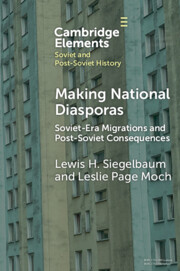Element contents
Making National Diasporas
Published online by Cambridge University Press: 11 July 2023
Summary
- Type
- Element
- Information
- Online ISBN: 9781009371810Publisher: Cambridge University PressPrint publication: 03 August 2023
References
- 3
- Cited by

